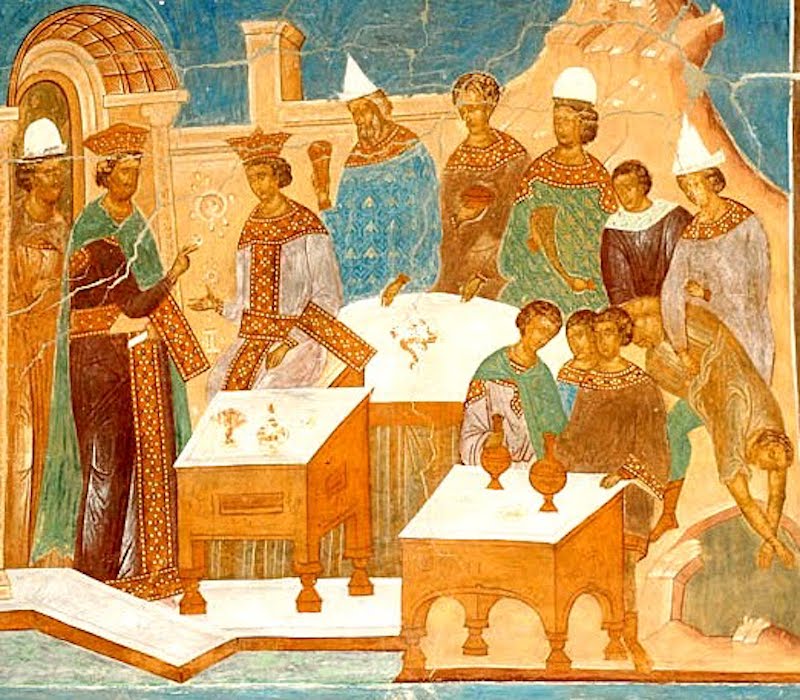Our parable for today is a hard one to figure. If we look at it as an allegory, we’re confronted by some very problematic images. First, there’s the king. Is this God? Well, if he is, then God is a vengeful tyrant, very much into retribution. When people don’t go to his party and mistreat and murder his slaves, he turns around and burns down their city. Destruction is met with bigger destruction. The bullies are crushed by a bigger bully.
This king seems to have an endless number of slaves. He sends more out to invite different people to come to his feast. Good people and bad people alike, he pulls them off the streets to come to his celebration.
These people come. And to me, this part of the story makes sense. We all are invited to God’s feast, whether we deserve it or not. We’re the guests at the holy banquet. We can come, we can celebrate. Yes.
But then we get to the bit about the fellow who is not wearing a wedding garment. Again the king acts differently from the God I know and love. He rages at the man. He commands him to be bound and ousted from the party — cast away from everything good and warm and joyous into a realm of darkness, where there is weeping and gnashing of teeth. This for being dressed improperly?
Fortunately, this story is not an allegory. We don’t have to get our cues about who God is from how the king acts, thank heavens. Instead it’s a story about where we look. It’s about looking to and celebrating Jesus.
In the language of the Soul the symbol of a wedding banquet is a very big deal. It is the celebration of a change of consciousness — a union of elements that were once completely out of relationship or actively in conflict. Tensions are eased as a completely new understanding pervades our awareness. A wedding is an expression of a resolution, something the psyche celebrates with profound rejoicing.
Jesus often alludes to himself as the bridegroom. As the Gospel of John professes, he brings a new consciousness, a light in the darkness of human comprehension. As the bridegroom, he symbolizes resolution. He is the interface between God and humanity — God with skin on.
In the middle of human history, God stuffed God’s self into human form and became this being who was at once completely divine and completely human. He tented among us. The Divine became human in order that humans might become divine.
The radical thing is not what Jesus teaches, what he asks us to do. No, the radical thing is where he tells us to look. What is most important in this lifetime? What is most valuable — more valuable than gold or jewels, than your business, your status, what people think of you, your possessions or your family? What is the one truth that remains with us through changes of fortune, losses and gains — the one truth that will set us free?
It is the relationship between each one of us and God. There is no greater purpose in life, no more significant undertaking, than to find and build up this relationship. This is the only thing that lasts, the one thing we can always take with us, the one thing that matters.
To be in relationship with God we need simply to turn again and turn again toward God. We don’t have to worry about the things in us which pull us away — the old perspective that is not wearing a wedding garment because it doesn’t understand. In relationship with God, relationship with God is built.
As it’s said in our second lesson, from Paul’s letter to the Phillipians:
“Rejoice in the Lord always; again I will say, Rejoice. Let your gentleness be known to everyone. The Lord is near. Do not worry about anything, but in everything by prayer and supplication with thanksgiving let your requests be made known to God. And the peace of God, which surpasses all understanding, will guard your hearts and your minds in Christ Jesus.”

